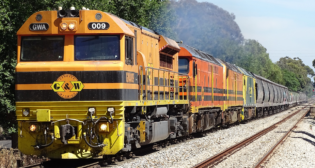
Historic female first for NJT Presidential Emergency Board
Written by Frank N. Wilner, Capitol Hill Contributing EditorIn a historic first, and in a rail industry whose labor and management leadership ranks long have been dominated by Caucasian males, the first all-female Presidential Emergency Board (PEB) in the 78-year history of PEBs has been created to investigate and make recommendations in a collective bargaining dispute involving New Jersey Transit (NJT) and 16 of its rail labor unions.
PEBs are a tool of the Railway Labor Act (RLA), which is intended to facilitate prompt and orderly settlements of collective bargaining disputes in the railroad and airline industries. (Labor-management disputes in other private sector industries are governed by the National Labor Relations Act, while federal employee labor-management disputes are governed by the Civil Service Reform Act.)
Each of the three women named by President Obama July 15 to PEB No. 248—Elizabeth C. Wesman who will serve as chairperson, Barbara Deinhardt and Ann Kenis—has previous railroad PEB experience. Wesman and Deinhardt served on PEB No. 247, which in late 2014 made recommendations in a collective bargaining dispute involving Southeastern Pennsylvania Transportation Authority (SEPTA); Kenis served on PEB No. 246 in mid-2014 that also involved SEPTA.
Since the first PEB was created in 1937, this 248th PEB is the first to be composed entirely of women. Just 18 of those 248 PEBs, or only 7%, have had at least one woman, and fewer than 3% of arbitrators named to PEBs since 1937 have been women. Of the 374 arbitrators on the NMB’s arbitration list—from which PEB members typically are selected by the White House—just 21% are women.
Even the NMB has a history of male dominance. While the NMB’s three current Senate-confirmed members include one woman, and while there have been as many as two women serving at one time in the recent past, it was not until 1983 that the first female (Helen Witt) was nominated by the White House (President Reagan) and confirmed by the Senate to serve on the NMB since its creation in 1934. Since June, for the first time in the 81-year history of the NMB, the majority (eight) of the agency’s 15 mediators are female, with three serving as senior mediators.
PEB No. 248 has until Aug. 14 to make non-binding settlement recommendations in the so-far intractable collective bargaining (wages, benefits and work rules) dispute involving NJT and its 16 various-craft rail labor organizations that have been coordinating their bargaining as a single coalition.
If a voluntary settlement does not emerge within 30 days following recommendations to be made by PEB No. 248, a public hearing conducted by the NMB is required. And should a settlement still not be reached, a second PEB likely would be named under special commuter-rail procedures specified by the RLA. In total, 240 days can pass from the July 15 creation of the first PEB until any party to the dispute is eligible to seek self-help (a strike by one or more of the unions involved, or a lockout by the commuter railroad).
The RLA, which has exceptional success in preventing work stoppages among freight railroads and Amtrak, similarly has demonstrated exceptional success in keeping the nation’s eight interstate commuter railroads operating—Chicago Metra, Long Island Rail Road, Massachusetts Bay Transportation Authority, Metro North Railroad, NJT, Northeast Illinois Regional Transportation Authority, Port Authority Trans Hudson and SEPTA. (Intrastate commuter railroads, such as Los Angeles Metrolink, are not subject to RLA procedures.)
How successful is the RLA and its PEB procedures? Almost 99% of all collective bargaining disputes submitted to the NMB have been settled without a work stoppage. There has never been an Amtrak work stoppage, and there has not been a single day lost to a freight rail work stoppage since 1996.
As for commuter rail collective bargaining disputes, NMB Mediator John M. Livengood, who maintains a non-agency webpage devoted to RLA history, says that since creation of special commuter rail provisions in 1981 by Congress, there have been 16 disputes leading to a first PEB, with 14 involving creation of a second PEB. Only twice has there been a commuter rail work stoppage following the second PEB, and both on LIRR—an 11-day strike in 1987, and a two-day strike in 1994. On SEPTA in early 2014, there was a one-day strike prior to President Obama appointing the first PEB.
Interestingly, of 49 PEBs created since 1982, 31 have involved commuter railroads.
Since 1981, there has been a separate congressionally created PEB process under the RLA for commuter rail bargaining impasses that includes a public hearing if there is no settlement following the first PEB, and the possibility of a second PEB. Unlike the first PEB, which makes non-binding recommendations, the second PEB chooses one of the parties’ last best offers as a recommended settlement. That choice can be the entire offer of one of the parties, or a selection of individual issues from each of the final offers. (Amtrak collective bargaining disputes are handled in the same manner under the RLA as freight railroad bargaining disputes.)
As with freight railroad and Amtrak collective bargaining disputes that go to a PEB, the parties are free to use self-help (strike or lockout) after the PEB process runs its course, but unlike with freight railroads, the RLA provides that a party resorting to self-help in a commuter rail collective bargaining dispute is subject to specific financial penalties.
For labor, if it rejects the second PEB’s choice of a settlement and strikes, the penalty is loss of unemployment benefits otherwise provided to striking workers under provisions of the RLA and paid under the Railroad Unemployment Insurance Act. For the commuter railroad, if it rejects the second PEB’s choice of a settlement that results in a strike or lockout, the penalty is a prohibition on the commuter railroad receiving any financial assistance from other railroads under an industry strike insurance plan.
As with a freight rail dispute, once self-help is invoked, only Congress has authority to end the dispute through legislation that typically imposes the final recommendations of a PEB. Congress does not always act quickly, however, as was evidenced by an 11-day strike on LIRR in 1987 prior to congressional intervention.
As for the three PEB No. 248 members:
Wesman, with a doctorate in industrial and labor relations from Cornell University and an undergraduate degree from Northwestern, has been mediating and arbitrating labor disputes since 1981. Formerly a professor of industrial relations at Syracuse University and Cornell, she is a past president of the National Association of Railroad Referees.
Deinhardt, educated at Yale and with a law degree from the University of California at Berkeley, was a trial attorney with the National Labor Relations Board and has substantial experience in labor-management issues involving state employees in New York.
Kenis, with undergraduate and graduate degrees from the University of Illinois and Northwestern, is a Loyola University Law School-educated attorney, has arbitrated hundreds of labor-management disputes in a variety of private sector industries, including railroads and trucking, and is a former secretary-treasurer of the National Association of Railroad Referees.



